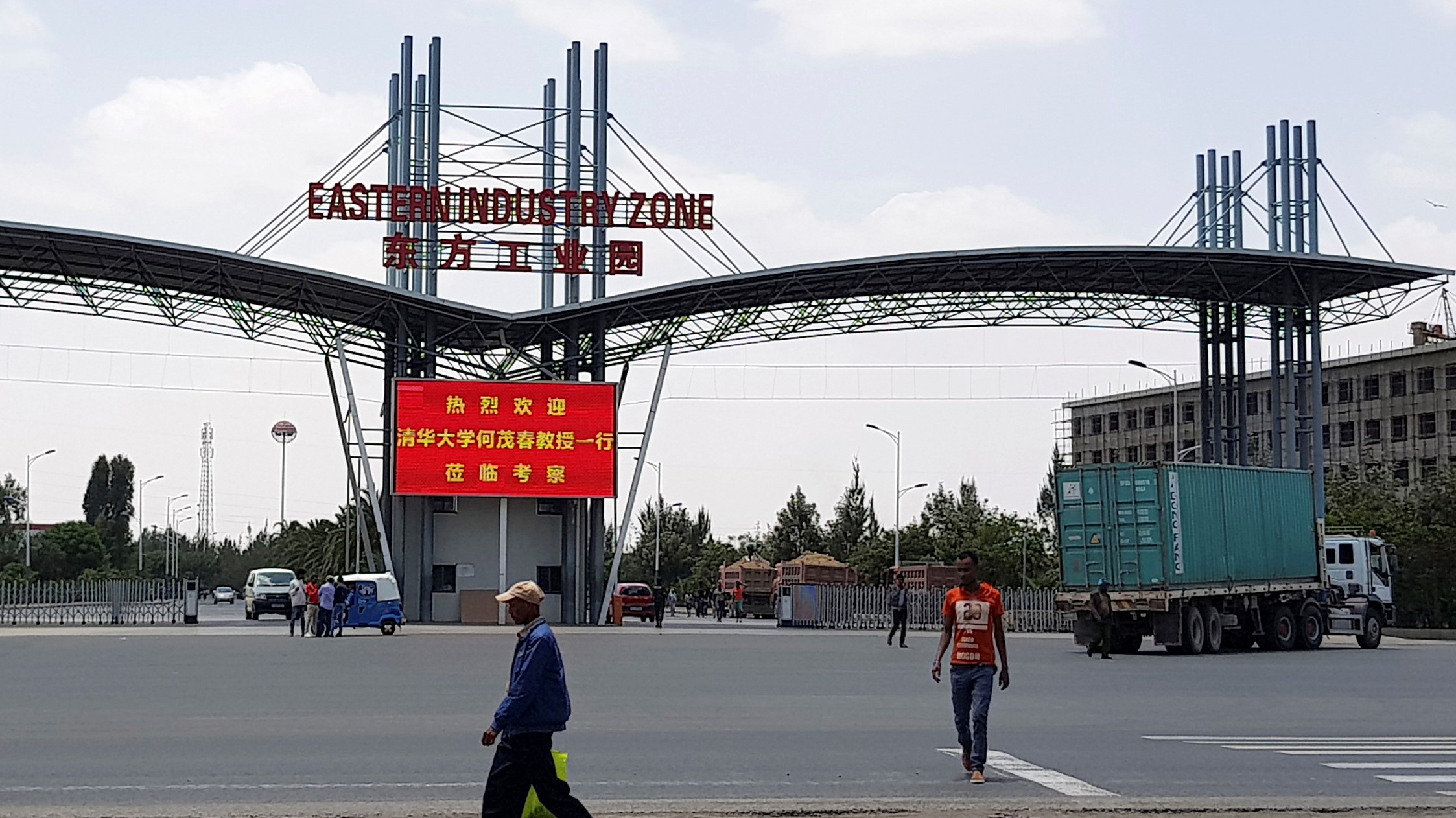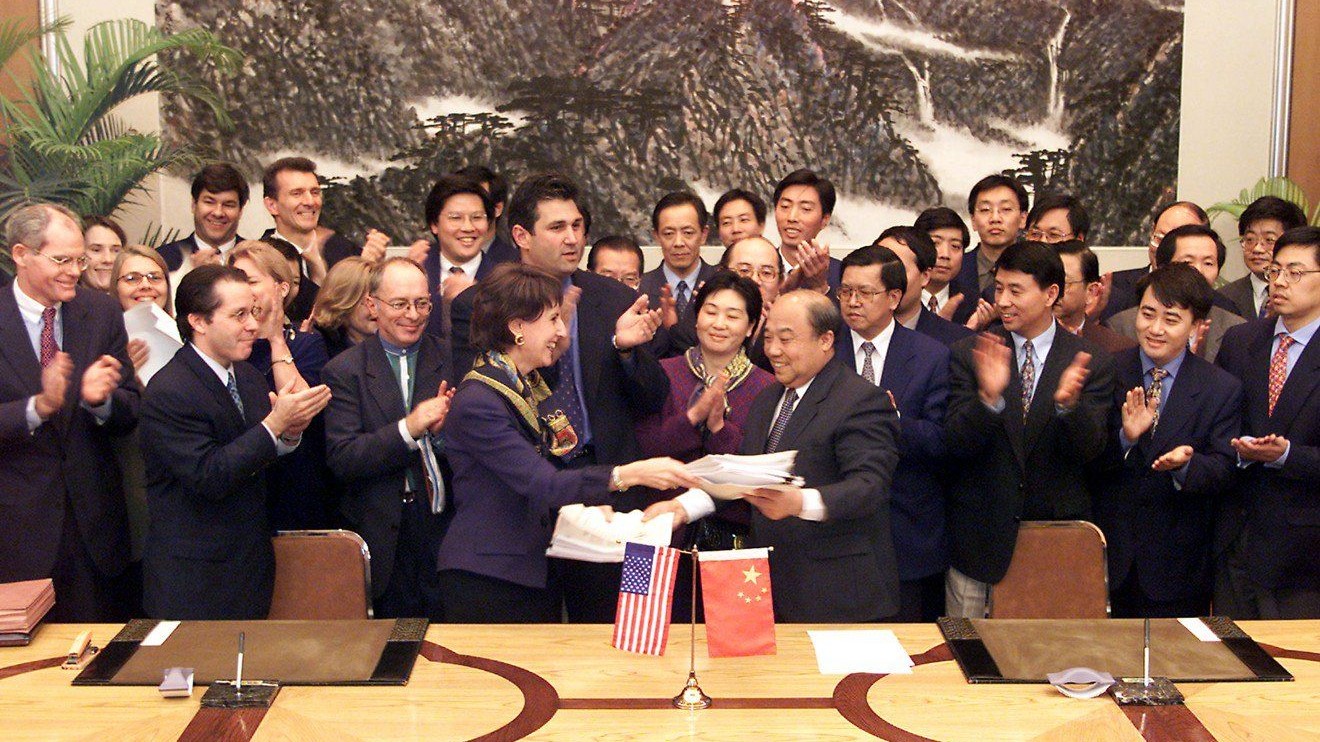US-China trade
China’s circumvention of trade remedies – and how the US can respond
Published 23 November 2021
China’s institutionalized trade circumvention apparatus presents an enormous challenge for modern trade policy and existing remedies are ill-equipped to address the problem. The global trade system needs a new and updated set of tools, which start from and require the US to coordinate with its allies and partners.
The United States announced recently that it would begin negotiations with Japan on the steel and aluminum tariffs imposed by the Trump administration in 2018. These discussions will likely be informed by the October 30 agreement between the European Union (EU) and the US that ended a multi-year dispute on the same subject. In particular, the US-Japan agreement ought to account for one particular provision of the EU deal, and the problem it acknowledges. the EU-US deal places restrictions on those products that, while finished in Europe, use steel that originate from elsewhere – South Korea, Russia, or China.
This is an important provision because it directs the benefits of the agreement to the parties involved in the negotiation. It has befuddled some economists, who are accustomed to trade remedies oriented around bilateral trade flows rather than multi-country value chains.[i] Although in a Band-aid fashion, the provision addresses a reality of the modern trade environment that existing trade tools are ill-equipped to resolve. The distortive market practices of one country, namely China, are no longer contained to operations in or shipments originating from that country. They can no longer be addressed only through bilateral trade policies directed at that country.
China’s industrial policy operates through a wide-ranging, multi-dimensional apparatus that is designed to export its model and to circumvent measures designed to protect against its distortive practices. This apparatus orients around localization and third-country re-export in and through areas that do not maintain strong trade enforcement tools and may even receive preferential trade treatment.
These mechanisms are not necessarily unique to China. However, the scale of China’s distortions is unique and makes its use of localization and third-country re-export particularly problematic. The carve-out in the recent EU-US trade constitutes a laudable recognition of the problem.
Bypassing tariffs through localization
Localization refers to the construction or acquisition of facilities abroad that allow Chinese companies to benefit from the host country’s trade status, regardless of the source of upstream inputs. According to a 2011 article in the Journal of Party and Government Cadres, Chinese companies invest overseas and establish local footholds in third countries in order to “bypass tariff and non-tariff barriers of importing countries.”
The acquisition of the Železara steel mill in Smederevo, Serbia by China’s state-owned Hebei Iron and Steel Group (HBIS) in 2016 is an instructive example. HBIS did not need the mill’s production capacity. Rather, the company wanted a foothold in Serbia. The Železara acquisition granted the Chinese state-owned entity access to the European market. “Through operations in Serbia,” reads an article in China’s Southern Weekend, “HBIS can avoid the impact of European trade protection measures such as ‘anti-dumping and countervailing’ on China's steel industry.” [ii] An analyst in Serbia explained that, “this [acquisition] is for entering the market and complicating the positions of the United States and Russia.”[iii]
The localization approach is also implemented at a more systemic level through industrial parks that the Chinese government sets up in emerging economies, especially in Africa and Southeast Asia, to benefit from their international trade status.
Take, for example, the Lekki Free Trade Zone in Nigeria, established in 2006. As early as 2007, a Xinhua News article offered this explanation:
"The advantages of the Lekki Free Trade Zone as a development zone outside China have emerged…Nigeria is a member of the Lomé agreement, and its products can enjoy preferential tariffs in the EU market without quota restrictions. Setting up factories in the free trade zone to realize the localization of the origin will help avoid various trade barriers and ease international trade frictions."[iv]
The Eastern Industrial Zone in Ethiopia, launched in 2008 by China’s Jiangsu Yongyuan Investment Company Ltd, serves a similar purpose. In a 2018 interview, the director of its managing committee said:
“We have encountered many trade restrictions limiting exports to Europe and America, especially textiles, garments, televisions, and some tech products. In these circumstances, the Chinese government said, ‘if you all stay in China, then it will be more difficult.’”[v]
Nor is this industry park localization approach limited to emerging economies. Haier constructed an industrial park in South Carolina in 1999. According to the Journal of Party and Government Cadres, doing so allowed Haier to “effectively solve the problems of consumer resistance to foreign brands and of non-tariff barriers in the target market.”[vi]
‘Trade war’ solutions
Localization is a strategic, long-term play. Third country re-export offers a faster, lower-cost alternative. It refers to the export of a product to one country by way of another via more than one bill of lading (e.g., the exporter arranges the sale through a middleman.) China boasts an entire industry dedicated to arranging third country re-export to avoid trade restrictions. As one Chinese re-export agent described in 2019, “By means of re-export trade in a third country, products can be detoured to the third country before entering the US market, which can reasonably avoid high US tariffs.”[vii]
That company also explained the process of re-export. The exporter declares that its container is headed to one country. The re-export agent arranges customs clearance and container replacements in that third country, as well as for a local agent to produce a certificate of origin, packing list, invoice, and bill of lading. The Chinese re-export agent then re-declares and exports the container “to any port you specify in the United States…Through the above re-export trade operations, high trade war tariffs can reasonably be avoided.”[viii]
Under international trade law, these practices qualify as unlawful “transshipment.” In Chinese sources, they are labeled as “trade war solutions.” They are not new. Nor do they exist only at the margins of trading activity.
Band-aid solutions
China’s institutionalized trade circumvention apparatus presents an enormous challenge for modern trade policy. Beijing’s distortive trade practices are widely acknowledged. However, whether they are tariffs or quotas, existing remedies are ill-equipped to address the problem. Focusing narrowly on goods received directly from China, these trade policies are designed for a world of bilateral trade flows—not convoluted, multi-country, multi-stakeholder value chains both difficult to trace and easy to obscure. The results are myriad. First, the international system remains stymied in its efforts to prevent market distortions. Second, emerging economies, granted beneficial trade status to further develop and catch up with other markets, find those advantages co-opted by the industrial policies of a major power.
The carve-out in the recent EU-US trade deal constitutes a major and laudable recognition of this problem. But its solution is little more than a Band-aid. The injury requires a more thorough response. The global trade system needs a new and updated set of tools.
Those tools start from and require coordination with allies and partners. The United States, Europe, developed Asian economies, and other trading partners should work to strengthen WTO enforcement mechanisms. A worthwhile starting point would be to update the definition of a “public body” in the WTO’s Agreement on Subsidies and Countervailing Measures to accurately reflect the scope and reach of contemporary Chinese industrial policy.
The United States should also lead efforts with allies and partners to invest in a new generation of customs protocols and accompanying information technology platforms. Monitoring for illegal circumvention activities requires modern, verifiable, and independent trade processing authorities and technologies. These initiatives can be developed at trading hubs, such as major international ports. And these initiatives can be part of the global community’s emerging focus on new infrastructure investments.
At a more strategic level, US policy should be realistic about two critical issues: the mismatch between the slow pace of multilateral reforms and the urgent need to protect critical, strategic sectors, and the near-term futility of tactical fixes for strategic problems.
Where possible, the United States should incorporate remedy circumvention frameworks into bilateral agreements. In addition, the US should diligently pursue enforcement of trade agreements with China. The direct effect of doing so constitutes only one benefit. The other goal is equally important. Such action would signal to allies and partners that the United States is dedicated to defending the global trade architecture against the bevy of distortive practices that make up China’s industrial policy.
[i] - https://www.wsj.com/articles/biden-eu-trade-deal-china-steel-jobs-imports-11636144386
[ii] - Zhang Xi, “Global steel surplus, the Chinese steel company is still buying and buying overseas,” Southern Weekend, April 21, 2016, http://static.nfapp.southcn.com/content/201604/21/c72110.html.
[iii] - “Serbia's rundown steel plant was rescued by a Chinese company and was sold for $1,” Reference News Network, July 17, 2016, https://baijiahao.baidu.com/s?id=1573044915534600&wfr=spider&for=pc.
[iv] - “China Nigeria Lekki Free Trade Zone Set Sail” (中国尼日利亚莱基自由贸易区起航), Xinhua News, December 16, 2007. Translation.
[v] - Tao projects that the appeal will be enduring and systemic: “A lot of China’s low-wage industry will move here. In China, wages used to be very low, but now they are quite high. For some labor-intensive industries, it is very difficult to survive because of the increased labor cost. Here, wages are much, much lower – less than ten percent of Chinese wages.” (David Blair and Xiao Xiangyi, “Manufacturers Look to Switch production to Africa,” China Daily, October 15, 2018.)
[vi] - 张佰英 [Zhang Baiying], 王丽娜 [Wang Lina]. 后危机时代美国贸易保护主义的应对之策 [Countermeasures of American trade protectionism in the post-crisis era]. 党政干部学刊 [Journal of Party and Government Cadres], July 16, 2011.
[vii] - "中美贸易战解决方案,升宝转口贸易合理规避美国高关税 [The solution to the Sino-US trade war, Shengbao's re-export trade reasonably avoids high U.S. tariffs]," Re-Export Industry Information, November 13, 2019.
[viii] - Ibid.
© The Hinrich Foundation. See our website Terms and conditions for our copyright and reprint policy. All statements of fact and the views, conclusions and recommendations expressed in this publication are the sole responsibility of the author(s).





